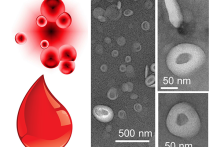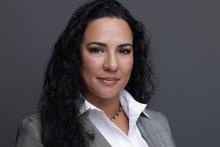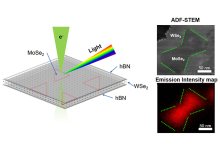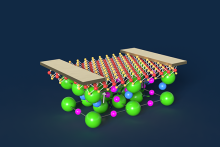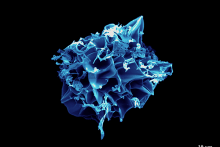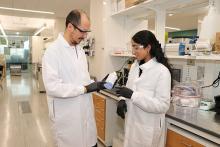Blood loss is the leading cause of death in trauma patients between the ages of 1 and 46 years, largely because they cannot access safe blood sources quickly enough. A possible solution? Freeze-dried synthetic blood.
The 2025 David Ford McFarland Award Lecture for Achievement in Metallurgy will be held at 3:05 p.m. on Thursday, April 10, in 101 Agricultural Sciences and Industries Building on Penn State's University Park campus. Rose Hernandez, science program director at the International Space Station National Laboratory, will deliver the lecture, “From Earth to Space: Advancing Materials Technologies and Embracing Life's Mission.”
Newly achieved precise control over light emitted from incredibly tiny sources, a few nanometers in size, embedded in two-dimensional (2D) materials could lead to remarkably high-resolution monitors and advances in ultra-fast quantum computing, according to an international team led by researchers at Penn State and Université Paris-Saclay.
Penn State researchers aim to enhance the University's research and development capabilities in next-generation semiconductor technology thanks to $4.3 million in infrastructure funding and in-kind support through the University’s membership in MMEC, a consortium of regional partners focused on microelectronics research and development.
Franklin M. Orr, Jr., Keleen and Carlton Beal Professor Emeritus in the Department of Energy Science and Engineering at Stanford University, will give the 2025 G. Albert Shoemaker Lecture in Energy and Mineral Engineering at Penn State. His talk, “Transforming Global Energy Systems to Mitigate Climate Change,” will be held at 4:00 p.m. on Friday, April 11, in 22 Deike Building at Penn State University Park and online via Zoom. A reception will precede the lecture at 3:00 p.m. in the Earth and Mineral Sciences Museum & Art Gallery. The event is free and open to the public.
Scientists at Penn State have harnessed a unique property called incipient ferroelectricity to create a new type of computer memory that could revolutionize how electronic devices work, such as using much less energy and operating in extreme environments like outer space.
The 17th annual Materials Visualization Competition, an annual scientific and artistic visual competition sponsored by the Department of Materials Science and Engineering and the Materials Research Institute, is now accepting submissions through March 7.
Three faculty from Penn State’s College of Earth and Mineral Sciences (EMS) have been elected to the National Academy of Engineering
Penn State’s Sustainable Labs Program ushers participating labs through a yearlong certification process, guiding them in implementing sustainable practices across multiple domains, including energy efficiency, waste reduction, water conservation, green chemistry and sustainable purchasing. The program will host a virtual information session from 9:30 to 10:30 a.m. on Tuesday, Feb. 18, and from 11 a.m. to noon on Friday, Feb. 21, for those interested in learning more or applying for the next cohort.


